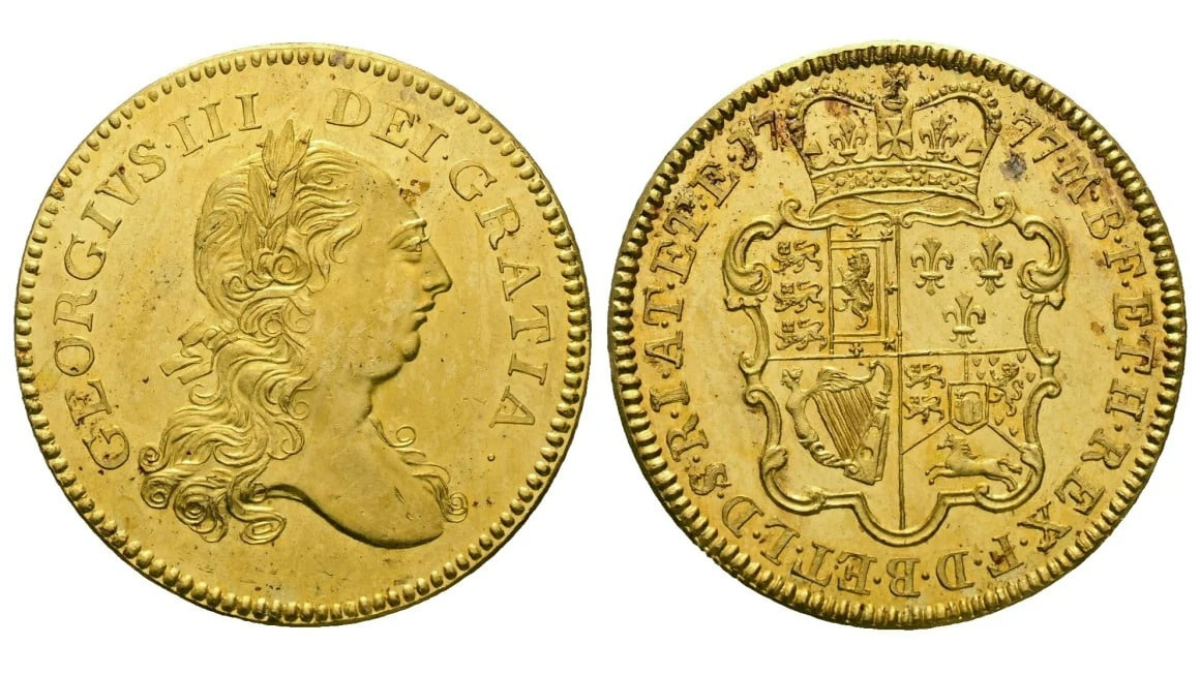
When it comes to rare and valuable coins, few compare to the historical and monetary significance of the 1777 George III Five Guinea coin. Struck during the height of the American Revolutionary War, this remarkable gold piece carries with it the weight of an empire and the allure of immense value—up to $340,000, depending on its condition and rarity. For collectors and history buffs alike, it represents a dazzling combination of artistry, scarcity, and legacy.
Whether you’ve inherited an old coin collection, are exploring numismatics, or just stumbled across a gold coin from an ancestor’s estate, understanding the importance of this British treasure could quite literally pay off. Let’s dive into its origin, features, value, and how you can determine if you might be holding one of the rarest coins from the 18th century.
The Rare Bicentennial Quarter Reportedly Worth $11 Million—Could It Still Be in Circulation?
A Coin Minted During Revolution
The 1777 Five Guinea coin was minted during the reign of King George III, a monarch perhaps best remembered by Americans for his role during the American Revolutionary War. At the time, this large denomination gold coin wasn’t something used for day-to-day purchases. Instead, it served ceremonial purposes, high-value transactions, or was given as a mark of honor—symbols of wealth and power in Georgian Britain.
The significance of the year 1777 cannot be overstated. It was a turning point in the war, with events like the Battle of Saratoga shifting momentum in favor of the American colonies. To hold a coin minted in that exact year is to hold a tangible relic of world-changing history.
Design and Features
What sets the 1777 George III Five Guinea apart—besides its age and gold content—is its exquisite design and craftsmanship. Here’s what to look for:
- Obverse (front): A right-facing bust of King George III adorned with a laurel wreath, symbolizing classical virtue and victory. It is inscribed with the Latin phrase:
“GEORGIVS III DEI GRATIA”
Meaning “George III, by the Grace of God.” - Reverse (back): The crowned shield of the Royal Arms, flanked by ornate symbols representing the territories under British rule. It includes the elaborate Latin inscription:
“M.B.F.ET.H.REX.F.D.B.ET.L.D.S.R.I.A.T.ET.E.”
A long abbreviation meaning: “King of Great Britain, France, and Ireland, Defender of the Faith, Duke of Brunswick and Lüneburg, Arch-Treasurer and Prince-Elector of the Holy Roman Empire, etc.” - Edge: Depending on the version, the coin may have a plain edge or include inscribed text. Edge lettering was often used as an anti-counterfeit measure.
- Material and Size:
- Made from 22-carat gold
- Weight: Approximately 41.9 grams (or 1.66 troy ounces)
- Diameter: About 37mm
Even based purely on its gold content, the coin has intrinsic melt value—around $3,300 at current gold prices of $2,000 per ounce. But for collectors, it’s the coin’s rarity and condition that matter most.
1964 Jefferson Nickels Worth More Than You Think – Here’s Why
Why Is It Worth $340,000?
While not every 1777 Five Guinea coin will fetch six figures, certain factors can catapult its value into the stratosphere. Here’s why:
1. Scarcity
Although exact mintage numbers are lost to history, it’s widely believed that very few were produced in 1777. Fewer still have survived in collectible condition. Many are now held in museums or private collections.
2. Historical Value
The timing of this coin’s minting—amid the Revolutionary War—adds incredible appeal for collectors, particularly those interested in British or American history. George III’s long reign and involvement in pivotal world events increase the coin’s historical weight.
3. Condition and Grade
Coins graded as Mint State (MS-60 and above) by professional grading services like PCGS or NGC command premium prices. In 2023, a high-grade specimen sold for $340,000 at auction, largely due to its pristine preservation and well-documented provenance.
4. Unique Errors
Like many old coins, the occasional mint error—such as an off-center strike or die misalignment—can significantly raise its value. However, such coins must be authenticated to avoid costly mistakes.
Even circulated coins in Fine condition can be worth $10,000 to $20,000, while uncirculated examples start around $100,000 and rise from there.
Do You Have One?
Wondering if you might have a 1777 George III Five Guinea in your possession? Here’s how to find out:
Look for the Date and Portrait
Check the date “1777” and confirm the presence of George III’s laureate bust and the Latin inscriptions.
Measure and Weigh the Coin
Use a precise scale and caliper to check for:
- Weight: Around 41.9 grams
- Diameter: About 37mm
Verify the Metal
It should be gold—not plated or imitation. Real 22-carat gold will have a distinct weight and feel.
Seek Professional Grading
If you think you’ve found a genuine Five Guinea, have it authenticated and graded by PCGS or NGC. Their certification is essential for accurate valuation and eventual sale.
Selling or Preserving Your Coin
If verified, your coin could be worth tens or even hundreds of thousands of dollars. Consider the following options:
- Auction Houses: Reputable auctioneers like Heritage Auctions or Bonhams specialize in rare coins and can reach serious collectors.
- Trusted Dealers: Firms such as Chards in the UK are experienced in valuing and purchasing British coinage.
- Online Platforms: While sites like eBay offer visibility, they also pose risks—especially with counterfeits. Use them for research but proceed with caution when selling.
Final Thoughts
The 1777 George III Five Guinea coin is more than a chunk of gold—it’s a piece of British history, a collector’s prize, and possibly a life-changing discovery. If you come across a suspiciously large, heavy gold coin in an heirloom collection or old safe, take the time to investigate. With the right provenance and condition, you could be holding a $340,000 treasure in the palm of your hand.
